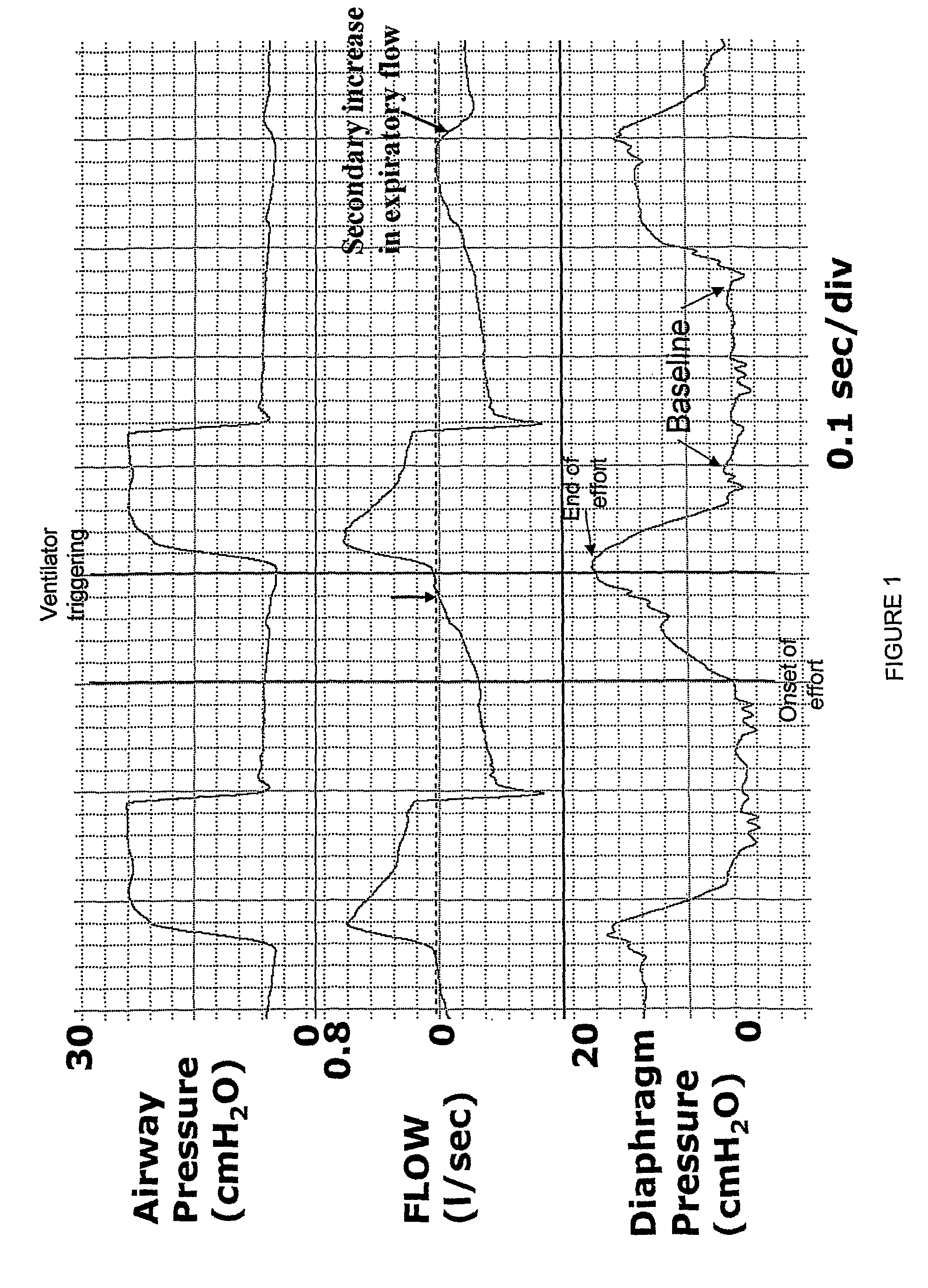Method and device for generating of a signal that reflects respiratory efforts in patients on ventilatory support
a technology of respiratory effort and signal, applied in the field of assisted mechanical ventilation, can solve the problems of ineffective effort, effort completely failing to trigger the ventilator, and often marked trigger delay
- Summary
- Abstract
- Description
- Claims
- Application Information
AI Technical Summary
Benefits of technology
Problems solved by technology
Method used
Image
Examples
Embodiment Construction
[0063]The Younes approach contemplates novel methods and devices for specific and timely identification of respiratory phase transitions within the patient for use in monitoring patient-ventilator interaction or to effect switching of ventilator cycles. These methods / devices represent a progression in complexity that address the problems inherent in the prior art ventilation procedures described above.
[0064]In the simplest of these methods, a Signal is generated (Signal X) that incorporates changes in both the flow and airway pressure (Paw) information. Thus,
Signal X=(Flow*Kf)−Paw Equation 2,
[0065]where, Kf is a constant that converts flow to pressure. Kf may be an estimated or assumed value of patient's resistance (including endotracheal tube). There are two advantages to this approach over the use of flow alone: First, the Signal becomes relatively immune to changes in flow trajectory produced via changes in pressure at the exhalation / PEEP valve mechanism (#1 in Background above)...
PUM
 Login to View More
Login to View More Abstract
Description
Claims
Application Information
 Login to View More
Login to View More - R&D
- Intellectual Property
- Life Sciences
- Materials
- Tech Scout
- Unparalleled Data Quality
- Higher Quality Content
- 60% Fewer Hallucinations
Browse by: Latest US Patents, China's latest patents, Technical Efficacy Thesaurus, Application Domain, Technology Topic, Popular Technical Reports.
© 2025 PatSnap. All rights reserved.Legal|Privacy policy|Modern Slavery Act Transparency Statement|Sitemap|About US| Contact US: help@patsnap.com



